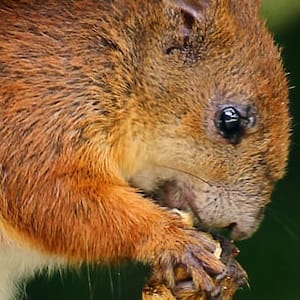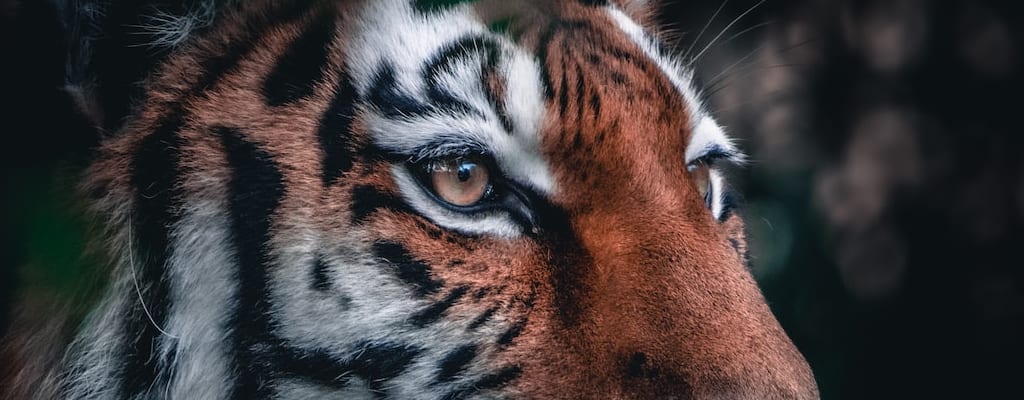deer in the headlights: Idiom Meaning and Origin
What does ‘deer in the headlights’ mean?
The idiom "deer in the headlights" refers to the state of being frozen or paralyzed with fear or surprise, likened to a deer caught in the glare of car headlights. It implies a sense of being unable to react or think clearly in a stressful or overwhelming situation.

Idiom Explorer
The idiom "jump in one's skin" means to startle or shock someone, causing a noticeable physical reaction. It often refers to a sudden surprise or fright that causes a person to react quickly or jolt in surprise.
The idiom "in the hot seat" means to be in a difficult or uncomfortable position, often under scrutiny or facing intense questioning.
The idiom "in the dark" means being unaware or uninformed about something, lacking knowledge or understanding. It is often used to describe a situation where someone is kept ignorant or intentionally left out of important information or events.
The idiom "in the crosshairs" means to be the target of attention, criticism, or potential harm.
The idiom "in a state" means to be in a state of distress, anxiety or confusion.
An idiom used to describe someone who is in an emotional or mental state of extreme agitation, distress, or confusion.
The idiom "in a pig's eye" is used to express disbelief or skepticism towards something, suggesting that it is highly unlikely or impossible to be true.
The idiom "in the face of" means to confront or deal with something difficult or challenging. It implies facing a problem or obstacle directly and not being intimidated or deterred by it.
The idiom "hide in plain sight" means to conceal oneself or something in a way that is not obvious or easily noticed, even though it is in a highly visible or noticeable place.
The idiom "have eyes in the back of one's head" means to be exceptionally observant or aware of one's surroundings. It implies a heightened ability to notice things that others might miss.
Decoding Paralyzed Gaze
"Deer in the headlights" is an American idiom that originated in the mid-20th century. The phrase describes a person's stunned or frozen reaction to a sudden or surprising event, similar to the behavior of a deer when caught in the path of an approaching vehicle. This idiom is derived from the literal behavior of a deer when it sees the bright headlights of a car approaching. When a deer is caught in this situation, it often becomes transfixed and unable to move, leaving itself vulnerable to an oncoming collision.
"Deer in the headlights" gained popularity in the 1950s and 1960s and is now widely understood across the United States. It is used to describe situations where individuals are momentarily paralyzed by fear, surprise, or confusion, often resulting in an inability to react or make a decision. The phrase vividly captures the momentary paralysis and surprise experienced by an individual in the face of a sudden or unexpected event.
The idiom "deer in the headlights" has become ingrained in American culture and is frequently used in various contexts, both figuratively and metaphorically. It can be applied to describe someone's response to a sudden and unexpected question, a daunting task, or a challenging situation. It emphasizes the element of shock or surprise that leaves a person temporarily unable to respond.
"Deer in the headlights" is related to the idiom "fogged out". This phrase also describes a person's inability to think clearly or make decisions due to confusion or mental fog. Just like a deer caught in the headlights, a person who is "fogged out" is temporarily unable to see a clear path forward and becomes mentally frozen.
Similarly, the idiom "deer in the headlights" is related to the phrase "dog that caught the car". This idiom is used to describe a person who has achieved or obtained something they desired or pursued, but is now unsure of what to do next. This sense of being caught off guard and unsure of what to do can mirror the behavior of a deer caught in the path of an approaching vehicle.
Additionally, the idiom "deer in the headlights" can be related to the phrase "hair-on-fire". This idiom is used to describe a person who is in a state of extreme panic or distress. Just like a deer caught in the headlights, a person whose "hair is on fire" is overwhelmed and unable to think clearly due to the intensity of their emotions.
"deer in the headlights" is a widely recognized idiom that vividly captures the momentary paralysis and surprise experienced by an individual in the face of a sudden or unexpected event. Its continued usage and cultural relevance highlight the enduring significance of this idiom in American language and communication. It is also related to other idioms such as "fogged out", "dog that caught the car", and "hair-on-fire", which all convey a sense of being caught off guard and temporarily unable to respond.
Example usage
Examples of how the idiom *deer in the headlights* can be used in a sentence are:
1. "When the boss asked her a difficult question, she just stood there like a deer in the headlights."
2. "After witnessing the car accident, John felt paralyzed, his mind blank as if he were a deer in the headlights."
3. "During the important presentation, the nervous speaker became a deer in the headlights, unable to remember any of his talking points."
More "Confusion" idioms



